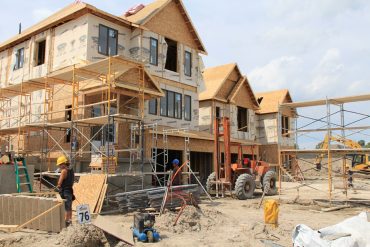
By Casey Edge
Recipe for a housing crisis? Just add government
Canadian ContractorCasey Edge takes aim at taxes, slow processes, and regulations for causing Canada's housing affordability problem
The Victoria Residential Builders Association held its annual Crystal Ball Housing Forecast on January 15. The key takeaway? Hot markets will cool off, moderation is the theme for 2019.
In the meantime, the media reports that Canada has record low unemployment levels and historically reasonable interest rates, both usually essential components for a healthy housing market.
However, Canada is a big country. A national housing market doesn’t really exist, just regional markets. This is clearly demonstrated by differences in average home prices across the country, ranging from $179,634 in New Brunswick to $695,385 in British Columbia.
It’s worth noting that the unemployment rate is 7.9 per cent in New Brunswick and only 4.1 per cent in B.C. Clearly, you still need a job to buy a home, even an affordable home. And just because interest rates are historically low, it doesn’t mean a home is affordable. This is well demonstrated by the lack of affordability in B.C., where even small increases to low mortgage rates can send home-buyers into distress. In fact, presently almost half of the new housing in the Victoria region is rental accommodation for those unable to purchase.
When Vancouver and Toronto sneeze, the rest of the country catches a cold.
The B.C. Real Estate Association says much of the expected moderating influence on prices is attributable to the federal government’s mortgage stress test launched in 2018. However, this has simultaneously reduced home-buyers’ purchasing power by 20 per cent. Markets all across Canada were impacted by the change. Those hardest hit were young buyers.

(photo: John Bleasby)
Broad-based policy measures like these, when used to cure housing ills in Canada’s most populated cities, are politically motivated because that’s where the votes live. In fact, policies like B.C.’s Foreign Buyers Tax and Speculation Tax have a negligible impact on affordability and don’t increase supply. They mostly serve as another revenue source for government while simultaneously resulting in more young buyers being kicked out of the market.
But these policies do play well with voters – until the chickens come home to roost. B.C.’s Speculation Tax has axed housing projects planned for retirees moving to Victoria and killed the jobs associated with them. When voters begin losing their jobs, they may have a different perspective.
David Foot had it right in Boom, Bust and Echo
Why are some cities experiencing such high demand for housing and rising prices? It may be summed up by demographics, zoning, approval processes, regulations and fees. It’s been more than 20 years since demographer David Foot released his bestseller, Boom, Bust & Echo. Foot’s message still rings true — “When you get a big group of people moving through the same stage of their life at the same time, that’s what generates the mega-trends around us.” For example, Ryerson University’s Centre for Urban Research tells us that the 1.9 million millennials in the Toronto region are that city’s largest source of housing demand. A shortfall of 70,000 low-rise homes is predicted unless supply is significantly increased.
This housing boom and shortage was predictable, and the government could have planned for it far in advance. Instead, governments choked housing with regional greenbelts, and added more regulations, fees and taxes. Then they applied costly environmental regulations that discourage housing in the urban containment areas intended for housing!
The high price of over-regulation
A C.D. Howe Institute study revealed that zoning regulations, development charges, and housing limits in and around southern Ontario’s Greenbelt have added $168,000 to the price of single-family houses in Greater Toronto, and $644,000 to prices in Vancouver. Regulations caused single-family home prices in Victoria to rise by $264,000, while Calgary jumped by $152,000, and Ottawa-Gatineau by $112,000.
It’s not just a Canadian phenomenon. A recent Australian report says, “Zoning regulations provide benefits, but they also restrict housing supply and hence raise prices.” Zoning regulations raised prices by 73 per cent in Sydney, 69 per cent in Melbourne and 42 per cent in Brisbane.
Evidence that zoning plays a big part of the issue can be found in many property assessment notices. Single detached homes in Greater Victoria’s established neighborhoods are assessed at more than $1 million, of which 90 per cent represents a large lot and 10 per cent the 40+ year old house.
The lesson is this; Governments can’t choke housing with taxes, regulations, greenbelts and abominably slow processes without creating housing shortages and sending prices spiraling upwards. Add huge numbers of millennials and downsizing boomers, and you have a recipe for a housing crisis. Just add government.
The way three levels of government can best assist at this point is by acknowledging market realities, making re-zonings more efficient, and practicing restraint on regulations, fees and taxes. And read Boom, Bust, & Echo.
 Casey Edge is CEO of the Victoria Residential Builders Association and a passionate advocate for the home building industry in Canada.
Casey Edge is CEO of the Victoria Residential Builders Association and a passionate advocate for the home building industry in Canada.

Leave a Reply